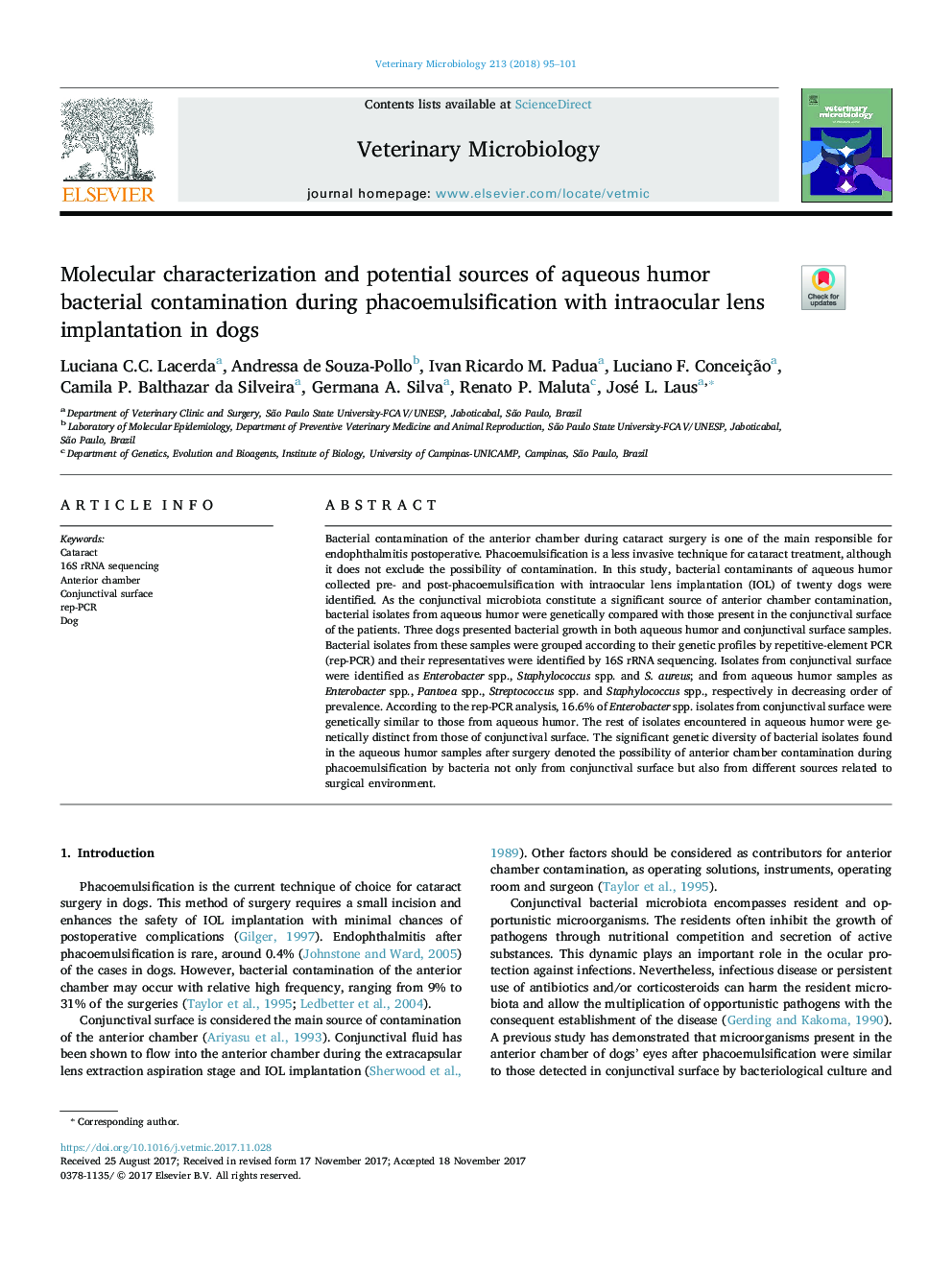| Article ID | Journal | Published Year | Pages | File Type |
|---|---|---|---|---|
| 8505658 | Veterinary Microbiology | 2018 | 7 Pages |
Abstract
Bacterial contamination of the anterior chamber during cataract surgery is one of the main responsible for endophthalmitis postoperative. Phacoemulsification is a less invasive technique for cataract treatment, although it does not exclude the possibility of contamination. In this study, bacterial contaminants of aqueous humor collected pre- and post-phacoemulsification with intraocular lens implantation (IOL) of twenty dogs were identified. As the conjunctival microbiota constitute a significant source of anterior chamber contamination, bacterial isolates from aqueous humor were genetically compared with those present in the conjunctival surface of the patients. Three dogs presented bacterial growth in both aqueous humor and conjunctival surface samples. Bacterial isolates from these samples were grouped according to their genetic profiles by repetitive-element PCR (rep-PCR) and their representatives were identified by 16S rRNA sequencing. Isolates from conjunctival surface were identified as Enterobacter spp., Staphylococcus spp. and S. aureus; and from aqueous humor samples as Enterobacter spp., Pantoea spp., Streptococcus spp. and Staphylococcus spp., respectively in decreasing order of prevalence. According to the rep-PCR analysis, 16.6% of Enterobacter spp. isolates from conjunctival surface were genetically similar to those from aqueous humor. The rest of isolates encountered in aqueous humor were genetically distinct from those of conjunctival surface. The significant genetic diversity of bacterial isolates found in the aqueous humor samples after surgery denoted the possibility of anterior chamber contamination during phacoemulsification by bacteria not only from conjunctival surface but also from different sources related to surgical environment.
Related Topics
Life Sciences
Agricultural and Biological Sciences
Animal Science and Zoology
Authors
Luciana C.C. Lacerda, Andressa de Souza-Pollo, Ivan Ricardo M. Padua, Luciano F. Conceição, Camila P. Balthazar da Silveira, Germana A. Silva, Renato P. Maluta, José L. Laus,
